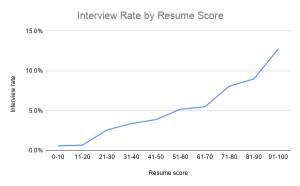In many ways, managing remote employees is just like on-site management. Your job is to nurture, guide, and support your employees – and if you do your job right, both the organization and the people on your team will grow. However, while you don’t need to reinvent the wheel, there are a couple of key techniques that are specific to remote management. Check out our six top tips on how to manage remote employees.
1. Be strategic when using different communication methods
Since it’s so easy to miscommunicate when you’re not physically in the room with someone, make sure every interaction you have with your reports is delivered in the right way using the right channel.
Here are some ideas of how to use different mediums for different purposes:
- Email: Give short and neutral exchanges of information and try to limit how many you send. Email is most vulnerable to being misinterpreted since you’re missing all the context from tone-of-voice, body language, and facial expressions. So, you want to reserve email communication for objective discussions
- Team community: Set up informal group discussions, share general announcements and updates, and celebrate successes. Build team community and create a culture of appreciation by celebrating daily wins. Your business’s success is not possible without the hard work of your employees, so make sure to frequently recognize employees for their contributions and accomplishments. Participate heavily in your company’s employee recognition program (or advocate for one if there isn’t a program already in place) to ensure your remote team feels valued and appreciated every day.
- Virtual face-to-face: Turn on your video when joining a virtual meeting. Showing your face in a virtual meeting can make all the difference when communicating with your reports. This is especially important when you’re having difficult one-on-one discussions, driving performance conversations, leading team bonding activities, or brainstorming/ When you’re about to have a fairly in-depth, lengthy, or emotional meeting, you should always try to make it face-to-face.
- Phone chats: Have quick and informal one-on-one discussions, do check-ins, and pick up the phone to say “thank you” to your team.
- Employee feedback: Take the pulse of employee engagement and ask your team for feedback on a regular basis. Listen to your employees and gather feedback from your direct reports on how you can improve your managerial skills. Once you gather their feedback, make it your priority to follow up and take action on it.

2. Promote team bonding and develop strong team dynamics
Most people who work in an office environment enjoy occasional lunches or drinks with their team. And then there’s the tradition of having cake for people’s birthdays. These are all great team-bonding activities. Unfortunately, they obviously won’t work with geographically dispersed remote teams. A key piece when it comes to how to manage remote employees is to bring your team together. As a manager, be creative about ways to achieve team bonding if workers are physically separated. Ensure you bring your team together at least once a month for a fun team bonding activity, whether it’s a virtual team happy hour or entertaining trivia session.
How to manage remote employees can be challenging when workers are dispersed across the world. With remote workers, you don’t have the advantage of watching body language for signs of trouble between team members. The same is true for managing the morale of individuals. How can you tell if remote workers are unhappy if you can’t see them? Watch closely for warning signs such as these:
- Reduced output
- Short and abrupt emails
- Reluctance to engage in telephone calls or video conference calls
- Shortage of new ideas
3. Set clear expectations
Remote work, by definition, is far less structured than on-site work. And while that has huge bonuses, it also means that you’re going to need to provide more structured expectations.
Ideally, the first in-depth discussion about what you’re looking for would take place during onboarding. But these discussions should continue anywhere from once a month to once a week.
Each team member should have no doubts about:
- The priorities this week
- Clear goals for the next three months
- Which tasks or projects the individual owns
- Whom to go to with issues
- Your level of availability (when, where, and how team members can reach you)
- The individual’s level of availability
If you don’t feel confident that your employees know all of this information, either consider scheduling more frequent check-ins or identify the information gap. For example, are you being transparent enough? Are your expectations still unclear?

4. Communicate the “why”
When it comes to how to manage remote employees, it’s critical to always communicate the “why” behind your asks and make sure your team understands how their work contributes to the bigger picture. In a remote environment, it can be easy to feel isolated. As a manager, you’re very aware of how each person’s work is building towards a long-term goal, but your employees don’t have the benefit of this bird’s-eye view.
The fix is simple. Tell them how their individual tasks and projects map to the organization’s objectives.
5. Be transparent
To improve the speed and quality of decision-making, you should strive to be as transparent as possible with your team members. The more they know, the easier it will be for them to act autonomously while working remotely. Below are a few tips to build transparency:
- Consider having regular team meetings with your reports to discuss company updates, pending decisions, any recent changes, revenue, and financial updates, etc.
- Give all of your team members access to the same information. This improves an individual’s ability to think and act as a single unit (which is especially critical considering they’re distributed). It also means you won’t face unnecessary bottlenecks.
- Be honest. When you’re speaking with your team members, strive to be as authentic and candid as you can.
How to manage remote employees just got a little bit easier
How to manage remote employees might not be an easy task, but with our top tips it just got a little bit easier. Take our five tips with you and successfully manage your team from anywhere. If you’re looking for more remote working tips, check out our blog post covering, “12 Tips for Working From Home.” It houses great tips on how to stay productive while working from home and is a great read to share with your team.
To learn more about how to connect with your remote workforce, check out our webinar recording, “Engaging and Recognizing Employees During the COVID-19 Pandemic and Beyond.”
Business & Finance Articles on Business 2 Community
(75)
Report Post






